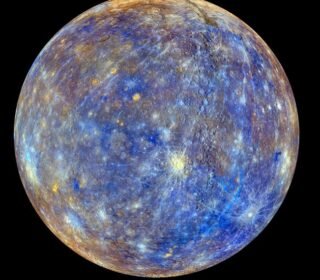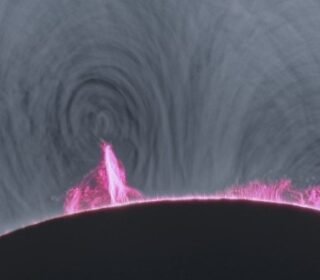How Space-Time Geometry Affects Neutrino Oscillations

Neutrinos are among the most mysterious and elusive particles in the universe. They can change their identity as they travel through space and time, a phenomenon known as neutrino oscillation. Scientists have been studying this process for decades, hoping to uncover new physics beyond the standard model. Now, a team of researchers from India has shown that the geometry of space-time itself can influence neutrino oscillation, opening up new possibilities for understanding these ghostly particles.

Neutrino Oscillation: A Quantum Puzzle
Neutrinos are produced in abundance in nuclear reactions in the sun, stars, and elsewhere. They have very little mass and interact very weakly with other matter, making them extremely difficult to detect. They also come in three types, or flavors: electron, muon, and tau. As neutrinos travel, they can switch from one flavor to another, depending on their energy and the distance they cover. This is called neutrino oscillation, and it implies that neutrinos have mass, which is not explained by the standard model of particle physics.
Neutrino oscillation was first predicted by Bruno Pontecorvo in 1957 and later confirmed by various experiments, such as the Homestake experiment, the Sudbury Neutrino Observatory, and the Deep Underground Neutrino Experiment. However, the exact mechanism and parameters of neutrino oscillation are still not fully understood. Scientists have proposed various theories and models to explain the observed data, but none of them are conclusive.
Space-Time Geometry: A New Factor
One of the challenges in studying neutrino oscillation is that it depends on the ratio of the distance traveled by the neutrino to its energy, or L/E. This means that different neutrino sources, such as the sun, the atmosphere, or a particle accelerator, produce different oscillation patterns. Moreover, the oscillation pattern can also be affected by the presence of matter, such as the earth, which can enhance or suppress certain flavors.
However, a new study by a team of researchers from the Indian Institute of Science Education and Research (IISER) in Pune, India, has suggested that there is another factor that can influence neutrino oscillation: the geometry of space-time. According to the theory of general relativity, space-time is not flat but curved by the presence of mass and energy. The researchers have shown that this curvature can also affect the L/E ratio of neutrinos and, thus, their oscillation probability.
The researchers have used a mathematical framework called Finsler geometry, which generalizes the concept of distance in curved space-time. They have derived a modified formula for the L/E ratio of neutrinos that takes into account the effects of space-time geometry. They have applied this formula to various scenarios, such as neutrinos traveling in the vicinity of a black hole, a neutron star, or a gravitational wave. They have found that the space-time geometry can cause significant deviations in the neutrino oscillation probability, depending on the mass, energy, and distance of the neutrino source.
Implications and Future Directions
The study by the IISER team is the first to show that the geometry of space-time can cause neutrinos to oscillate. This has important implications for both fundamental physics and astrophysics. On one hand, it can help test the validity of general relativity and the standard model of particle physics and potentially reveal new physics beyond them. On the other hand, it can provide new insights into the properties and sources of neutrinos, such as supernovae, gamma-ray bursts, and dark matter.
However, the study also poses new challenges and questions. For instance, how can the effects of space-time geometry be measured and distinguished from other factors, such as matter and energy? What are the optimal conditions and detectors for observing these effects? How can the theoretical predictions be tested and verified by experimental data? These are some of the directions that the researchers plan to explore in the future.
The study by the IISER team was published in the journal Physical Review D and was supported by the Department of Atomic Energy, Government of India.




